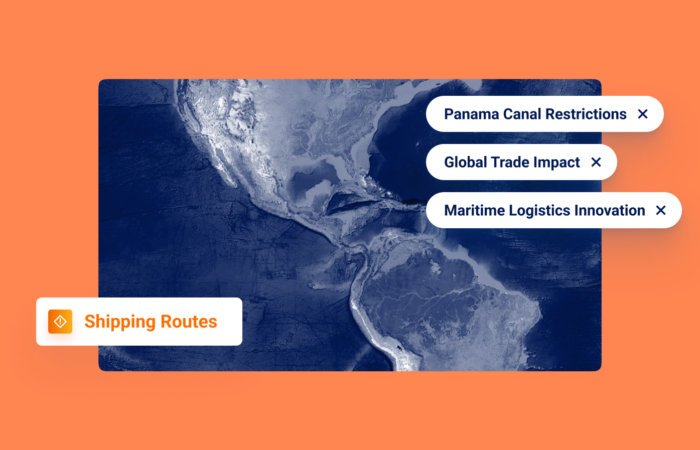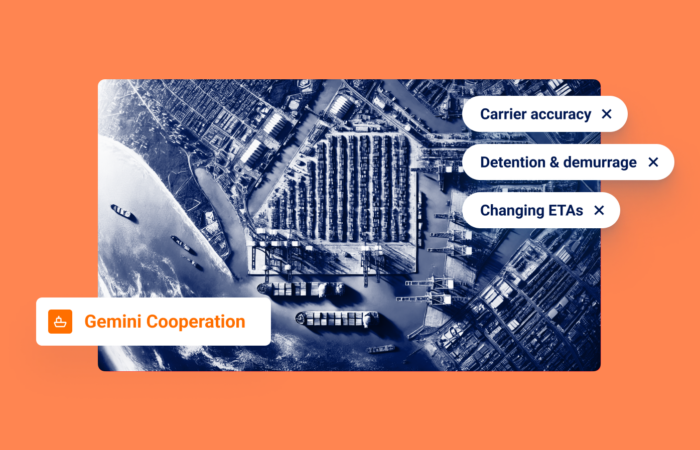Transitioning Pharmaceutical Shipping from Air to Sea: 5 Key Tips

What’s inside?
The global pharmaceutical industry depends on efficient and timely transportation to ensure the availability of life-saving medications and vaccines around the world. Lives could be at stake if certain medications and drugs are unnecessarily held up by supply chain delays. Additionally, some drugs can quickly become non-viable due to delays.
Shipping via the sky has long been the preferred method due to its speed and the relative tracking ease. Many pharmaceutical and life science companies currently outsource their shipping and logistics needs to third-party logistics (3PL) companies offering inscrutable, “black box” technology. The issue is that air freight is costly and makes a significant impact on the environment in a world that is increasingly trying to go green.
Pharmaceutical companies are increasingly exploring alternative options, namely maritime shipping, to reduce costs and reduce environmental impact. Transitioning from air to maritime shipping requires careful planning and execution. In this blog post, Windward, the leading provider of Maritime AI™, will explore five essential tips, including the utilization of an actionable ocean freight visibility solution based on artificial intelligence (AI), to help pharmaceutical companies navigate this transition successfully.
1.Deploy an ocean freight visibility solution
There are many milestones along the container journey that are important. Two critical, and the least reported, milestones by carriers are when the vessel arrives at the port of departure and vessel departure from port of loading. Having full visibility of milestones provides much-needed value, including keeping track of critical dates to validate late fee invoices – instead of wasting money on inaccurate detention and demurrage charges.
Adopting an ocean freight visibility (OFV) solution into the shipping process can significantly enhance the transition to maritime shipping. These types of solutions leverage AI models and predictive analytics to provide comprehensive visibility into the entire maritime ecosystem, from the moment the pharmaceutical products leave the manufacturing site, until they reach their destination. Real-time tracking and monitoring of containers, coupled with data analytics capabilities, enable proactive and strategic decision-making, and timely interventions.
2. Benefit from accurate ETAs and exception management
Deep learning and machine learning models from an OFV solution can generate real-time ETA predictions for the entire global fleet of container vessels and continuously calculate congestion levels at all container ports, providing the most accurate container ETAs. This helps prevent haulage, detention and demurrage fees, keeping costs low.
And with exception management, pharmaceuticals organizations can focus on the containers and vessels that will most affect their bottom line and propel the business forward. Exception management filters all shipments and identifies those that are significantly or critically late, or early. Life sciences/pharmaceutical companies can then take appropriate action to mitigate any potential issues.
3. Work with a trusted advisor to ensure compliance
Transitioning to maritime shipping requires a thorough understanding of the regulatory landscape governing pharmaceutical transportation. Different countries have varying regulatory frameworks and documentation requirements for pharmaceutical imports and exports. Pharmaceutical companies must ensure compliance with relevant regulations, to avoid delays or potential legal issues.
An additional wrinkle to consider: Russia’s war against Ukraine has created a difference of opinions between some in Europe and Ukraine regarding drugmakers still working in Russia. Pharmaceuticals are usually exempt from sanctions, but there could be reputational damage and informal boycott risk, even for inadvertently charting a previously sanctioned ship or engaging in trade with a blacklisted organization. A trusted maritime advisor can help organizations better understand compliance requirements, as well as offer a due diligence solution.
4. Choose optimized shipping routes
Choosing the right corridor for your cargo is much easier if you have a general understanding of the efficiency levels and congestion statuses of the world’s leading container ports, including transit times, efficiency based on call duration by different container vessel sizes, overall pressure based on TEU capacity sailing into the ports, and more.
5. Know the reasons for delay
As noted, the timely delivery of potentially life-saving medications and drugs can be critical, and key stakeholders not only need to be alerted to delays, they need to know why so they can communicate effectively and preempt future issues. An innovative “Reasons for Delay” feature also eliminates the need to chase carriers, terminal operators, and others.
By leveraging real-time tracking, monitoring, and predictive analytics capabilities, pharmaceutical and life sciences companies can optimize their logistics operations, ensure the integrity of their products, and deliver life-saving medications to patients in a timely and reliable manner – while reducing costs and easing their carbon footprint.
Embracing ocean freight visibility solutions is an important step towards building a resilient and efficient pharmaceutical supply chain in the modern era. It does not have to be disruptive, as API technology means that pharmaceutical companies can receive maritime insights directly into their existing workflows.
Want to Go from Wings to Waves?
Windward’s military-grade technology has been trusted by organizations throughout the maritime ecosystem for over a decade. Windward Maritime AI™ fuses multiple data sources to generate unique, real-time, and actionable insights and has been trusted by leading organizations. Leverage these award-winning capabilities to gain more control over your supply chain operations.












